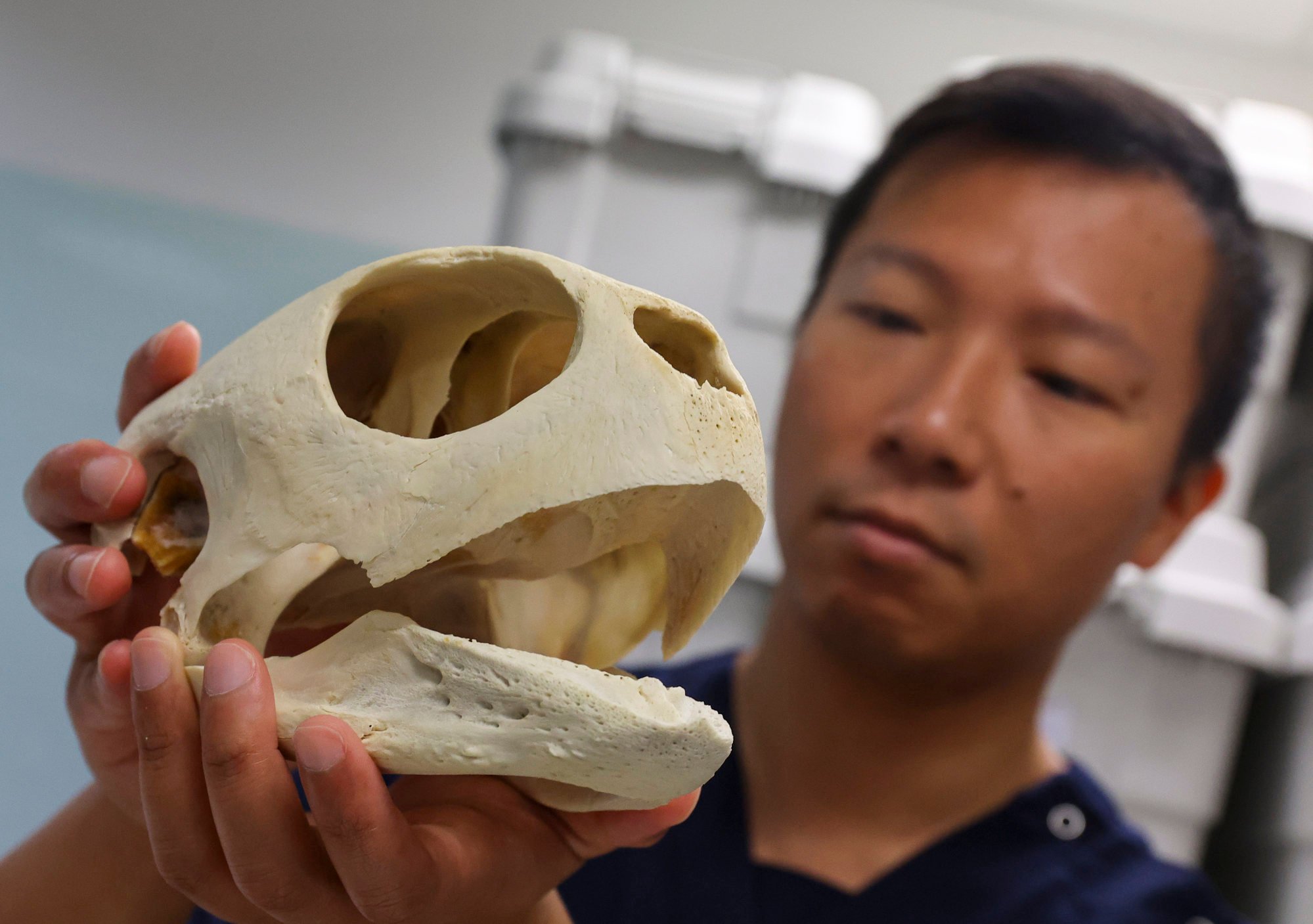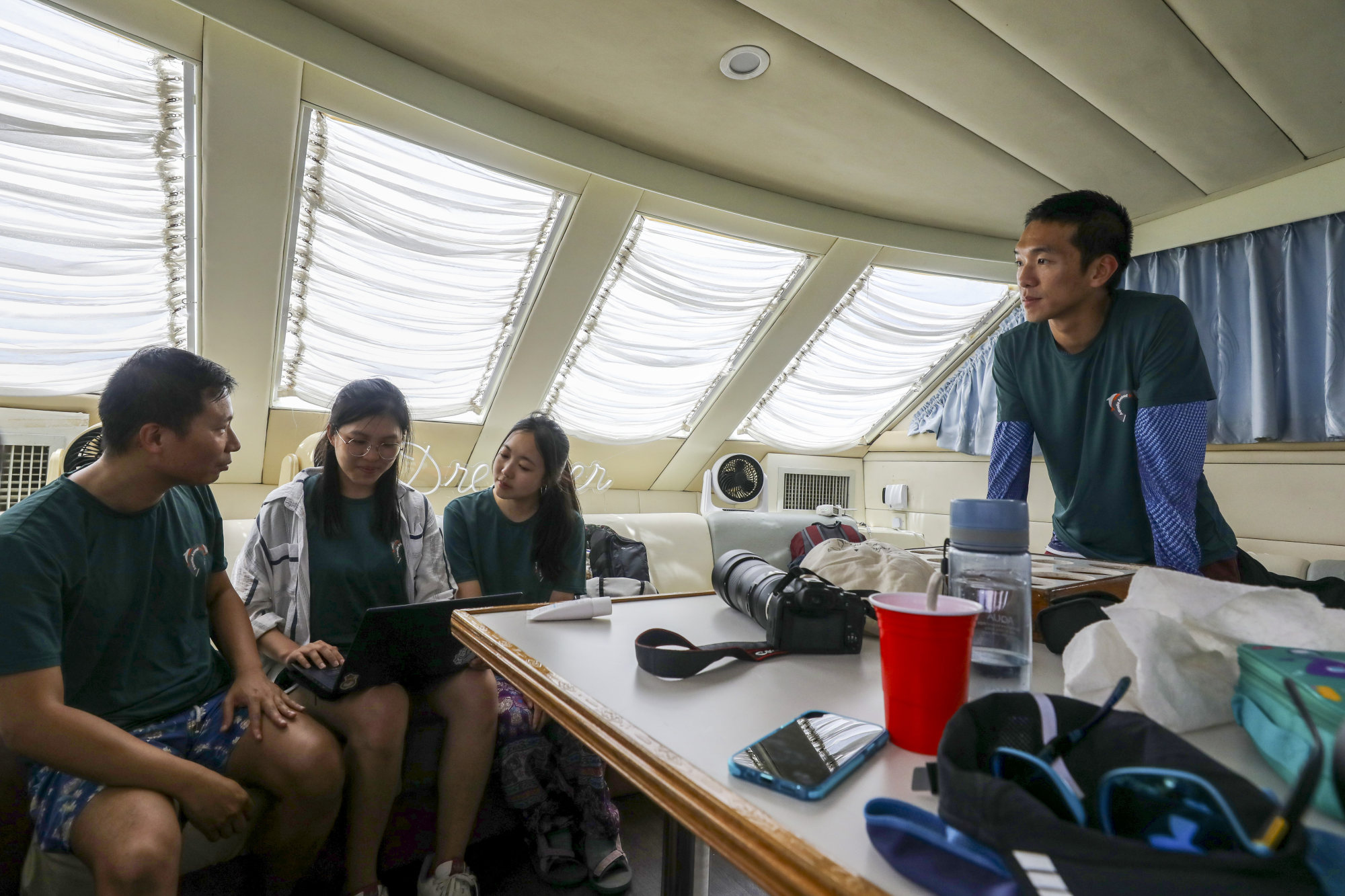
Hong Kong’s white dolphins, finless porpoises face same threats on daily basis as whale found dead off Sai Kung, researchers warn
- City University team is building database to identify all 350 white dolphins found in city waters since 2020
- Animals susceptible to being trapped in abandoned fishing nets, hit by ship propellers and affected by noise from ship engines
When veterinary scientist Brian Kot Chin-wing went to Hong Kong’s western waters with a team of researchers last Tuesday, they spotted 20 white dolphins in six hours, including a calf believed to be less than two weeks old.
“Sometimes, we could only spot one,” said Kot, an assistant professor of diagnostic radiography at City University and principal investigator at its aquatic animal virtopsy lab.

The team of roughly a dozen has identified about 350 white dolphins in the city’s waters since 2020 and is building up a database to identify every one of them.
Kot said people should pay more attention to the species of dolphins that call Hong Kong home in light of the Bryde’s whale found dead off Sai Kung last month.
“The whale was a visitor, but our resident species – the Chinese white dolphin and finless porpoise – face all the same challenges as the whale every single day,” he said.
Both sea mammal species found in city waters are considered vulnerable species.
Kot and his team performed an autopsy on the whale. Details of the cause of death are expected to be announced by Ocean Park in the next few weeks, according to sources.
The aquatic animal virtopsy lab has since 2014 used diagnostic radiology to check every dolphin and porpoise found dead in Hong Kong before necropsies are performed on them. It has included sea turtles since 2019.
Did Hong Kong do enough to protect whale? Mammal’s death spurs calls for action
Kot said virtopsies, a virtual alternative to a traditional necropsy, used scanning and imaging technology and were more suitable for carcasses that were very large or in remote areas.
The research team, made up of doctoral and undergraduate students of veterinary medicine and vet volunteers, also take samples of the animals’ organs to look for lesions and parasitic infections to help pinpoint the cause of death.
The animals are susceptible to being trapped in abandoned fishing nets, hit by ship propellers and affected by noise from ships’ engines.
In the case of the whale, the team also took samples of its organs, including its liver, kidneys and intestines, with a preliminary analysis indicating that two large wounds on its body could have led to an infection.
On Tuesday’s trip, Kot’s team found at least one Chinese white dolphin with a cut, probably caused by a boat propeller.
Judy Chen Qing, the chairwoman of the Ocean Park Conservation Foundation, said marine pollution, coastal development and fishing seriously endangered the survival of aquatic mammals and damaged their habitats.
On January 12, the foundation was given the carcass of a newborn finless porpoise found at the Clear Water Bay Golf and Country Club with fishing gear entangled around its tail.

A postmortem examination showed that it also had suffered pneumonia caused by a parasitic infection.
Another finless porpoise calf carcass that turned up on March 5 at a rocky beach near the same club was found to have died from asphyxiation and drowning because of entanglement.
The same month, the Agriculture, Fisheries and Conservation Department announced a new 2,400-hectare (5,930-acre) North Lantau Marine Park linking up the existing Sha Chau and Lung Kwu Chau Marine Park and the Brothers Marine Park to form a 4,570-hectare protected area.
Statutory procedures for the designation of the zone are expected to be completed next year. Vessels entering the area cannot exceed 10 knots.
The department recorded 25 aquatic mammal carcasses last year, down from 55 in 2019. Kot’s team suggested that the decline reflected lower levels of marine traffic over the Covid-19 pandemic.
“During Covid-19, there were no ferries, no high-speed boats. They are smart animals, so they went back and ventured into the busy routes,” Kot explained. “If we understand what they’re doing here, then we will probably understand why they are there and what we can do to preserve them.”
Fewer ferries lead to more dolphin activity, Hong Kong group finds
His team started visiting the waters near Tai O, Fan Lau and the Soko Islands every other week since January 2020 to monitor the white dolphins’ health in their habitat and build a profile on each of them.
The individual profiles help the team understand the health of the entire population in Hong Kong collectively, Henry Tsui Chun-lok, a team member, said.
“At present, we only know about them after they die,” he said. “With the database, we will be able to identify them when they die and this database can be used to trace their conditions for a more comprehensive postmortem result.”
